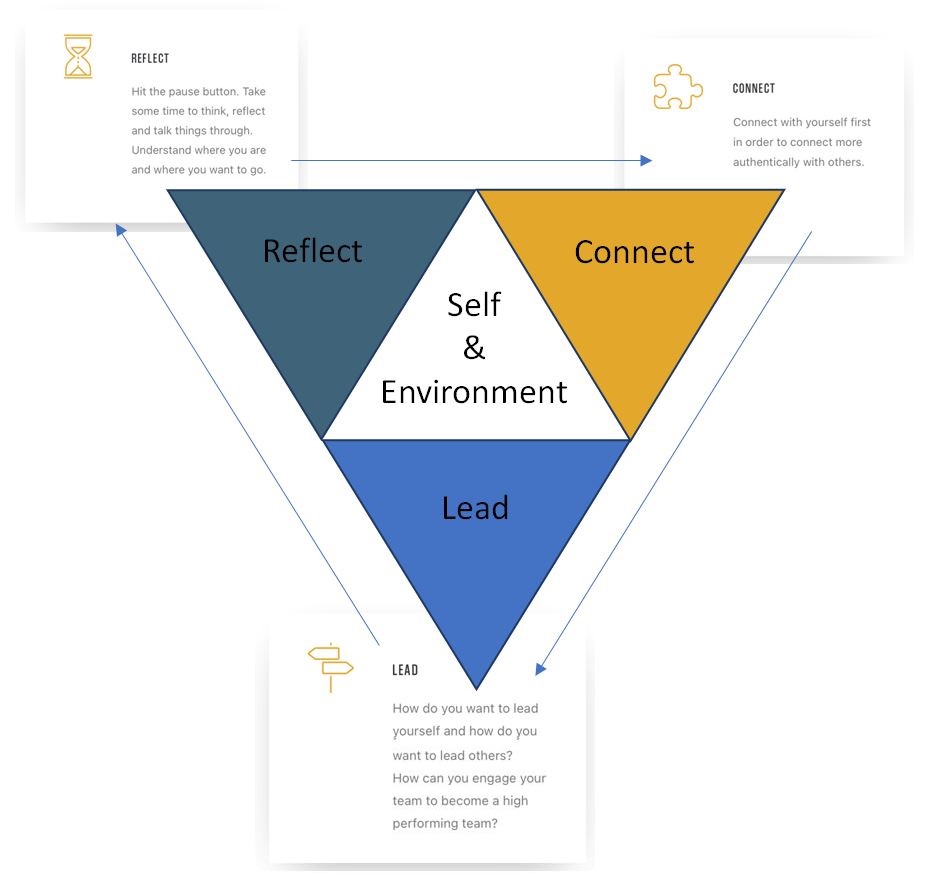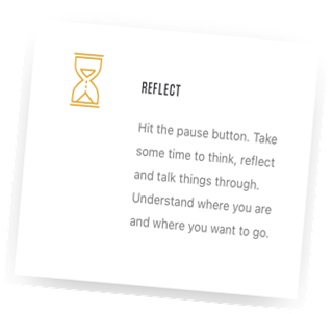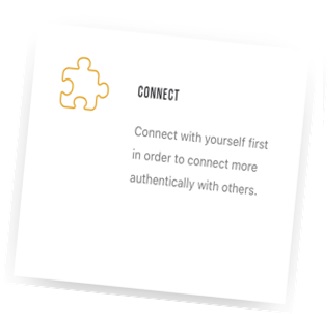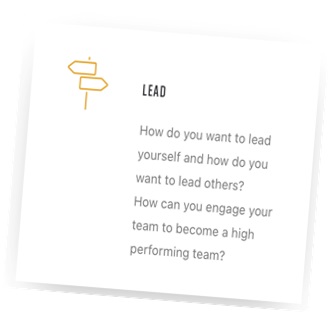A Coaching Model By Tim Sandock, Executive Leadership Coach, SWITZERLAND
Take a Moment to REFLECT – CONNECT – LEAD
A study conducted by Gallup1) on employee engagement reveals that managers have a great influence on their employees’ engagement. The devastating outcome is though that worldwide an average of only 13% of employees are engaged in the work they do.
As an executive coach, this shocking number is the fuel for my coaching work with managers of all levels.
My aim is to support them in becoming leaders so that their employees’ potential is recognized and used rather than wasted.
A sentence I hear a lot in my coaching sessions with clients from various industries is:
I am a specialist in my field but I have never really learned how to lead people.
The statement is often accompanied by doubts and questions like
- What is a great leader?
- What is expected of me?
- What if I don’t have all the answers?
- What is the difference between management and leadership?
- How can I connect more with my team?
- What is the right balance of sharing? I don’t want to pour out my heart in front of my team.
Leaders are made, they are not born. Vince Lombardi
This quote speaks to me because it shows, like with many other skills you can also learn how to lead. My aim is to support people in developing their leadership approach in an authentic and sustainable way.
Below I explain how the coaching model that I also use on my website www.interpersonal-leadership.com supports your development in becoming the leader you want to be. Simultaneously, it will also help your team to become more effective.
REFLECT – CONNECT – LEAD
A lot of my clients describe their work by mentioning the “hamster-wheel” analogy.
Some others actually use that picture to describe their life:
I constantly react to things that are thrown at me to accomplish targets and deadlines. I need to function and perform to get things done. Most of what I do, I do for others. I need to manage upwards and downwards and I feel like I am navigating through life on auto-pilot.
The problem is The person that who is easily forgotten in all of this is you.
Here is my offer for you so you can get things done without forgetting about yourself and being more true to yourself when leading your team.

REFLECT:
 In my coaching, we first look at you. Unconditional focus on you and 100% confidential.
In my coaching, we first look at you. Unconditional focus on you and 100% confidential.
Why is this so important? In the HBR article “Connect, Then Lead”2) it is described that
Before people decide what they think of your message, they decide what they think of you.
So, you need to make sure that you know yourself and that you are comfortable in your own skin as much as possible in order to gain authentic trust from your peers and direct reports.
In our sessions you get to step out of that hamster wheel, hit the pause button, and reflect:
Where are you and where do you want to go?
We are developing the awareness that makes you understand
- what is important to you.
- what your values are that drive you?
- what do you need in order to lead at your best?
- what the circumstances are when you lead at your worst?
- what gives you energy and what drains your energy?
- what is your role in all of this and what the dynamics are around you?
The more self-aware you are, the more authentically you can lead yourself and others.
CONNECT:
 Once you understand yourself better and you feel more confident in your self-leadership, you can expand the scope.
Once you understand yourself better and you feel more confident in your self-leadership, you can expand the scope.
A widely spread belief is that in your role as a manager, you need to be strong and firm, you cannot show any vulnerability and you need to know the subject matter inside-out. While this might have been the case some 20-odd years ago, more recent research suggests a shift in today’s leadership approach.
In the HBR article “Begin with trust”3)the authors describe that authentic leadership is about your people and creating the conditions for them to fully realize their own capacity.
To do this, you have to develop trust.
Another HBR article “Connect, Then Lead”2) suggests that
Although most of us strive to demonstrate our strength, warmth contributes significantly more to others’ evaluations of us – and it’s judged before competence.
Therefore, I will support you in finding your authentic style to connect to your team.
Topics we might look at are:
- How can you best develop trust in your team?
- What is your authentic way of showing care and interest in your team members?
- What might hinder you in doing so?
- What is the right level of empathy that you want to show?
- How can you build trusted relationships and still deliver constructive feedback?
- How can you make yourself relatable to your team members?
- What is the right level of sharing something about yourself in your workplace?
LEAD:
 The gift of more self-awareness and the ability to connect to the human side of your team members allows you more flexibility in your leadership style. What was once a purely reactive auto-pilot behavior for you might now be more of a conscious decision-making process. Now, you can decide how you want to react when facing challenges at work and at life in general.
The gift of more self-awareness and the ability to connect to the human side of your team members allows you more flexibility in your leadership style. What was once a purely reactive auto-pilot behavior for you might now be more of a conscious decision-making process. Now, you can decide how you want to react when facing challenges at work and at life in general.
Daniel Goleman describes in his article “Leadership That Gets Results”4) how conscious decision-making in different leadership situations can make you a more effective leader:
Organizational climate […] is influenced by leadership style – by the way that managers motivate direct reports, gather and use information, make decisions, manage initiatives, and handle crises.
What might have looked difficult to do at the beginning of the coaching process will feel much more natural to you now. Create a high-performing team by setting a direction. Recognize and empower each team member to bring their full potential to the table and benefit from their striving engagement. Make conscious decisions about which leadership style is the best in different situations that you are facing. And through a stronger bond with your direct reports, it will be much more natural to have constructive feedback conversations to drive your team’s effectiveness.
Learn How to Create Your Own Coaching Model
Your Coaching Model reflects your values,
philosophies, and beliefs and must communicate who you will coach
and the problems you will solve. Read more about creating your coaching model
References
1) Gallup: https://news.gallup.com/businessjournal/182792/managers-account-variance-employee-engagement.aspx
2)Harvard Business Review, July-August 2013: “Connect, Then Lead” by Amy J.C. Cuddy, Matthew Kohut, and John Neffinger
3)Harvard Business Review, May-June 2020: “Begin WithTrust” by Prof. Frances Frei and Anne Morriss
4)Harvard Business Review, March-April 2000: “Leadership That Gets Results” by Daniel Goleman